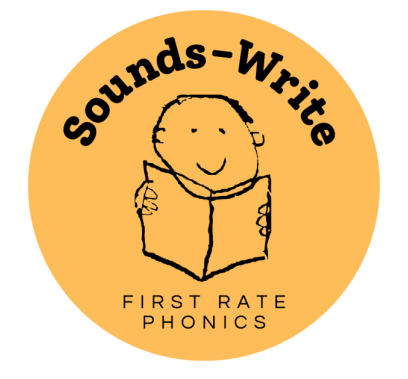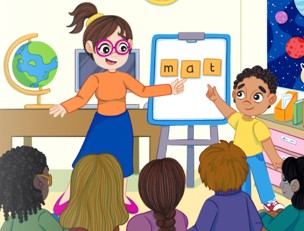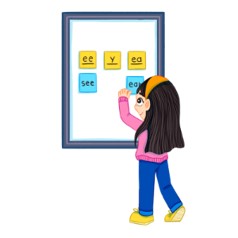Phonics
Sounds-Write
At Stanton St Quintin Primary, we teach phonics using a linguistic phonics programme called Sounds-Write. Sounds-Write is a highly structured, multisensory approach to teaching children to read and spell. Its structure and simplicity makes it a programme accessible to all learners and helps them to make excellent progress with their reading and spelling.
phonics using a linguistic phonics programme called Sounds-Write. Sounds-Write is a highly structured, multisensory approach to teaching children to read and spell. Its structure and simplicity makes it a programme accessible to all learners and helps them to make excellent progress with their reading and spelling.
The four key concepts children are taught are:
| 1. Letters are symbols that represent sounds |
For example; the single letters of the alphabet all make sounds |
| 2. Sounds can be spelt using 1, 2, 3 or 4 letters |
For example; happy rain night thought |
| 3. The same sound can be spelt in different ways |
For example; Unit 1 (ay/ai/ea/a-e) like in play/train/great/take |
| 4. The same spelling can represent different sounds |
For example; Unit 3 (ea) like in great/clean/bread |
The three key skills children need to master are:
- 1. Blending (putting sounds together to read a word)
- 2. Segmenting (saying the sounds to write a word)
- 3. Phoneme manipulation
Key Concepts
Children in our Foundation Stage begin with the initial code where they practise all three key skills whilst learning the 1:1 sound-spelling correspondences and securing their understanding of key concept 1, as stated above.
This builds up confidence and phonic knowledge in a truly reversible system, enabling them to decode and encode a wide range of words and sentences. At first, children learn to read and write simple one syllable words with a CVC structure.
Complexity of word structure systematically builds up so that children apply their code knowledge to monosyllabic words with up to six sounds.
Sounds-Write Across the School
Once the initial code has been mastered, children continue to practise all three key skills whilst learning the extended code which explores key concepts 2, 3 and 4. Learning of the extended code is a lifelong process – we all continue to develop our understanding of this code whenever we encounter new words. This is why Sounds-Write can be applied right up to the end of KS2. Whilst learning the extended code, children read and write monosyllabic and polysyllabic words at an age-appropriate level.
Children in Foundation Stage and KS1 have a 30 minute phonics lesson every day, in addition to their reading and writing lessons. Children in KS2  have a regular spelling lesson, focusing on polysyllabic words and etymology.
have a regular spelling lesson, focusing on polysyllabic words and etymology.
We encourage all of our parents to access the free Sounds-Write online course for parents: Help your child to read and write so that they are well-informed about how best to support their children with their reading.
What can I do to help my child at home?
Accurate pronunciation of sounds is so important. When supporting your child to read and spell at home, it is vital that you are also correctly modelling the sounds to your child, to ensure consistency in learning. Phonemes are the shortest possible sounds.
Please click here to watch Mrs Anderson modelling the correct pronunciation of sounds
Providing your child with an opportunity to regularly practise and apply the phonics they have learnt holds enormous value by securing and embedding learning into long-term memory. This is why it is so important to listen to your child read daily at home and spend time on any sounds or phonics bookmarks that have been sent home to practise.
This helpful video (created by Sounds-Write) demonstrates how to use word building to support your child at home.
We truly believe that supporting your child as an early reader and writer is a shared responsibility between home and school. Should you have any questions or require any support with phonics or reading at home, please get in touch with your child's class teacher.
